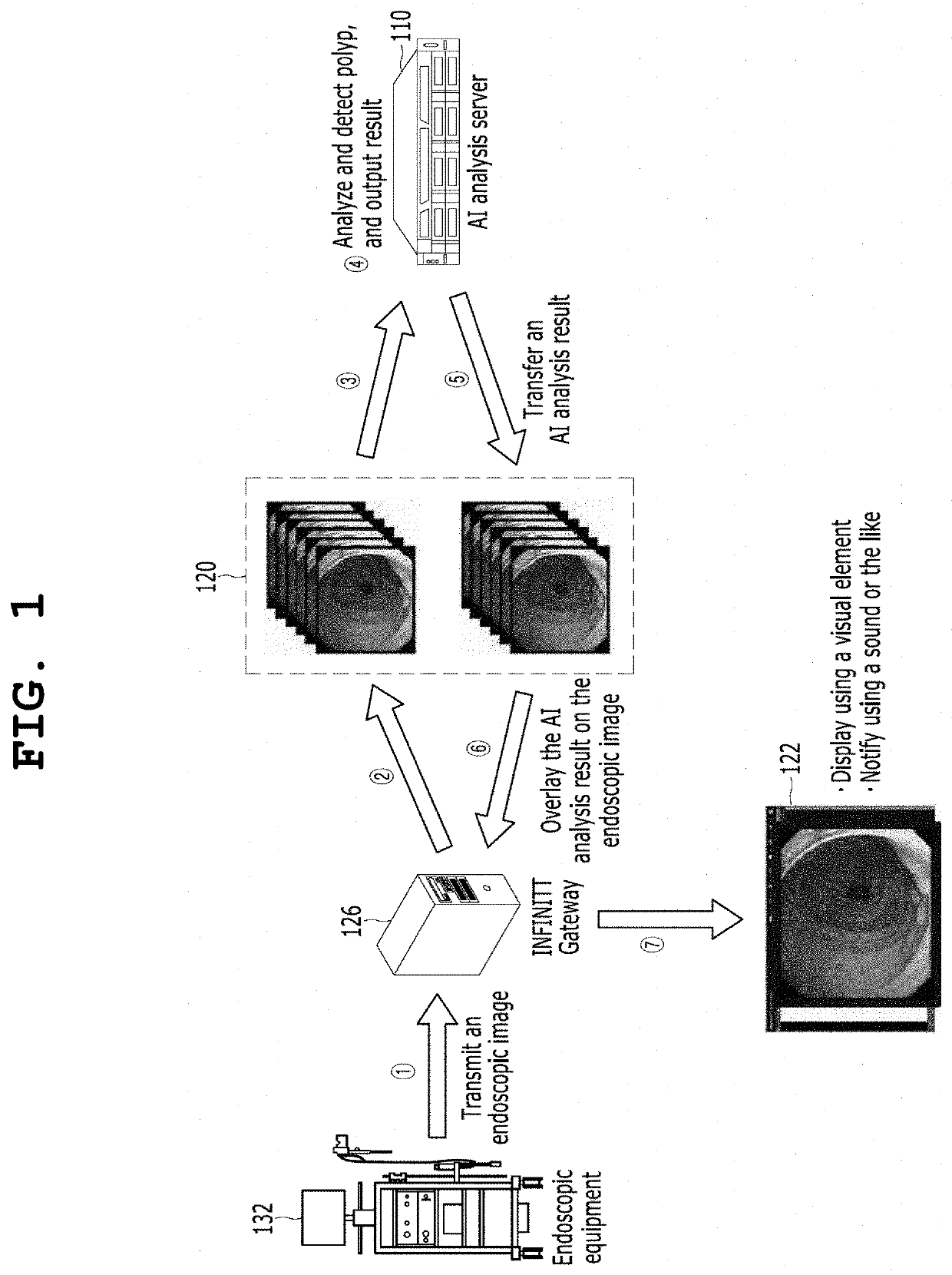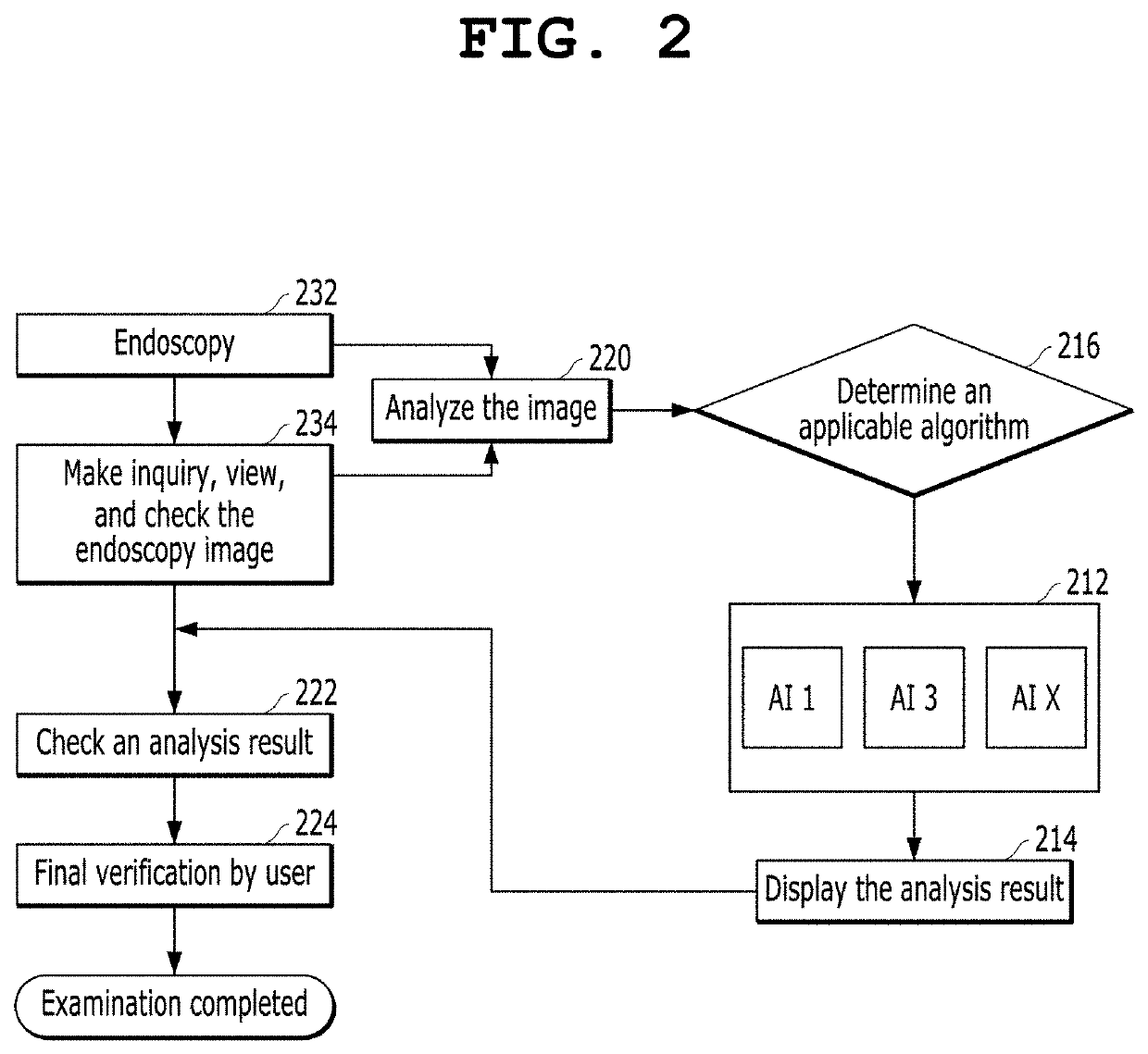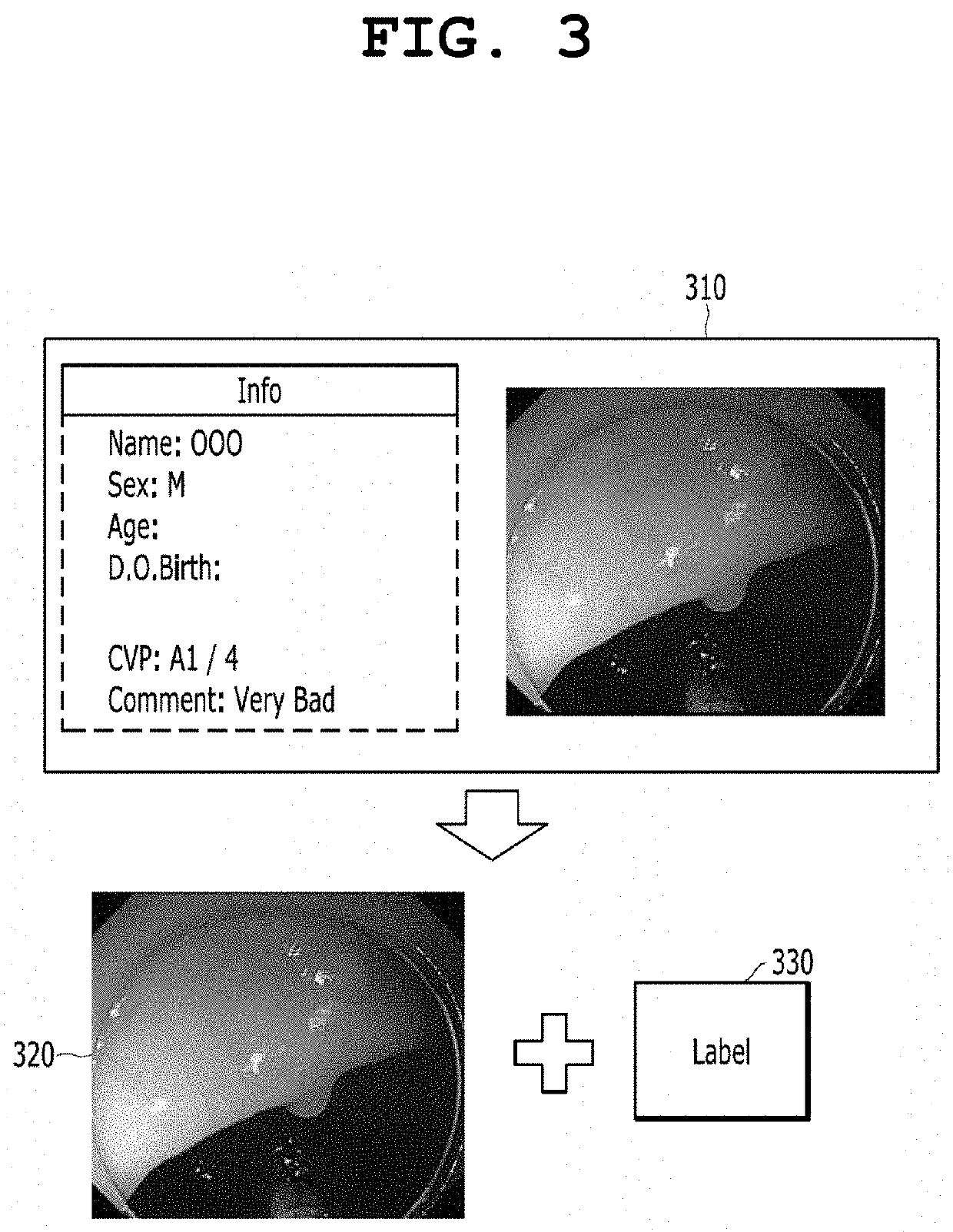Artificial intelligence-based colonoscopic image diagnosis assisting system and method
a colonoscopy and image diagnosis technology, applied in the field of medical image diagnosis assisting apparatus and method using an automated system, can solve the problems of reducing the confidence of clinicians in the clinical usefulness of this segmentation technique, unable to fully accept and adopt by users, and no visible results have yet been revealed
- Summary
- Abstract
- Description
- Claims
- Application Information
AI Technical Summary
Benefits of technology
Problems solved by technology
Method used
Image
Examples
Embodiment Construction
[0049]Other objects and features of the present invention in addition to the above-described objects will be apparent from the following description of embodiments to be given with reference to the accompanying drawings.
[0050]Embodiments of the present invention will be described in detail below with reference to the accompanying drawings. In the following description, when it is determined that a detailed description of a known component or function may unnecessarily make the gist of the present invention obscure, it will be omitted.
[0051]When recently rapidly developed deep learning / CNN-based artificial neural network technology is applied to the imaging field, it may be used to identify visual elements that are difficult to identify with the unaided human eye. The application of this technology is expected to expand to various fields such as security, medical imaging, and non-destructive inspection.
[0052]For example, in the medical imaging field, there are cases where cancer tiss...
PUM
 Login to View More
Login to View More Abstract
Description
Claims
Application Information
 Login to View More
Login to View More - R&D
- Intellectual Property
- Life Sciences
- Materials
- Tech Scout
- Unparalleled Data Quality
- Higher Quality Content
- 60% Fewer Hallucinations
Browse by: Latest US Patents, China's latest patents, Technical Efficacy Thesaurus, Application Domain, Technology Topic, Popular Technical Reports.
© 2025 PatSnap. All rights reserved.Legal|Privacy policy|Modern Slavery Act Transparency Statement|Sitemap|About US| Contact US: help@patsnap.com



